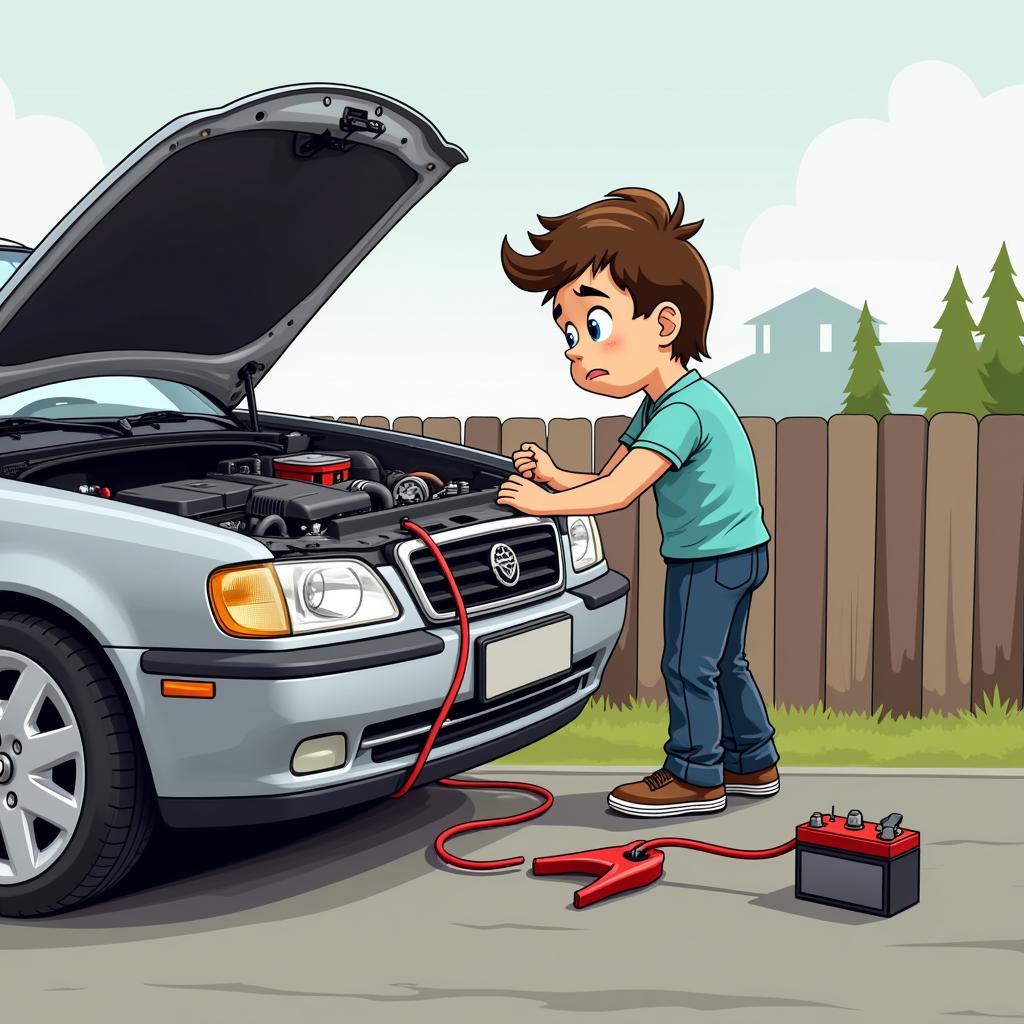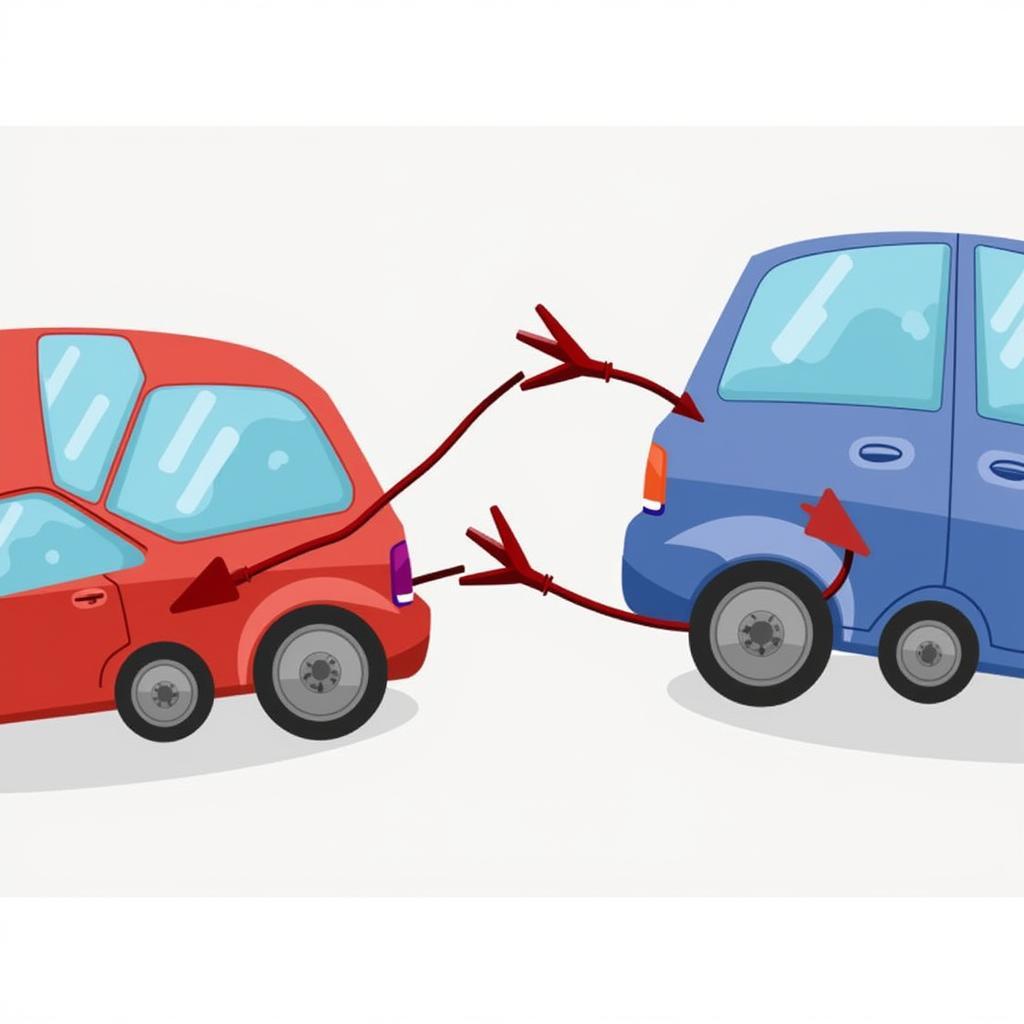If you find your car battery dead every morning, you’re not alone. This is a frustratingly common issue, and troubleshooting it can feel like a daunting task. This article dives deep into the causes of a dead car battery every morning and provides practical solutions, ranging from simple DIY fixes to more complex diagnostic procedures. We’ll empower you to tackle this problem head-on and get your car reliably starting each day.
 Car Battery Dead in the Morning: Troubleshooting the Issue
Car Battery Dead in the Morning: Troubleshooting the Issue
One of the first things to check is the battery’s age. Car batteries typically last between three and five years. If your battery is nearing or exceeding this lifespan, it’s likely the culprit. How to replace a battery in a bmw key fob While a failing battery is a common reason, it’s not the only one. Several other potential problems could be draining your battery overnight.
Why is My Car Battery Dying Overnight?
Several factors can contribute to your car battery dying overnight. These include:
- Parasitic Draw: This occurs when an electrical component continues to draw power even when the car is off, slowly draining the battery. Common culprits include interior lights, faulty door switches, or aftermarket accessories.
- Faulty Alternator: The alternator recharges the battery while the engine is running. A malfunctioning alternator won’t adequately recharge the battery, leading to a dead battery in the morning.
- Extreme Temperatures: Both extreme heat and cold can affect battery performance. Cold weather can slow down the chemical reactions within the battery, reducing its ability to hold a charge. Hot weather can accelerate battery degradation.
- Corroded Battery Terminals: Corrosion on the battery terminals can disrupt the flow of electricity, preventing the battery from charging properly and starting the car.
- Old Battery: As mentioned earlier, batteries have a limited lifespan. An old battery simply may not be able to hold a charge effectively anymore.
How to Diagnose a Dead Car Battery
Diagnosing the cause of a dead battery involves a systematic approach. Here’s a step-by-step guide:
- Visual Inspection: Check the battery terminals for corrosion. Clean them with a wire brush and baking soda solution if necessary.
- Battery Test: Use a multimeter to test the battery’s voltage. A fully charged battery should read around 12.6 volts.
- Parasitic Draw Test: Use a multimeter to measure the current draw with the car off. A draw of more than 50 milliamps may indicate a parasitic draw.
- Alternator Test: With the engine running, the multimeter should read around 14 volts, indicating the alternator is charging the battery.
How to Fix a Dead Car Battery Every Morning?
Addressing a consistently dead car battery requires identifying the root cause and implementing the appropriate solution. Here are some common fixes:
- Replace the Battery: If the battery is old or failing, replacement is the most straightforward solution.
- Address Parasitic Draw: Identify and fix the component causing the parasitic draw. This might involve replacing a faulty switch, relay, or disconnecting an aftermarket accessory.
- Repair or Replace the Alternator: A faulty alternator needs to be repaired or replaced to ensure the battery is charged correctly.
- Clean Battery Terminals: Regularly cleaning corroded battery terminals can improve electrical conductivity and prevent starting problems.
 Jump Starting a Car with a Dead Battery
Jump Starting a Car with a Dead Battery
“Regular maintenance, including battery checks and terminal cleaning, is crucial for preventing dead battery situations,” advises John Smith, a certified automotive technician with 20 years of experience. “Ignoring these simple checks can lead to more costly repairs down the road.”
What if the Problem Persists?
If you’ve tried these solutions and your car battery is still dead every morning, it’s time to seek professional help. A qualified automotive technician can perform a more thorough diagnosis using specialized equipment and identify any underlying electrical issues. How do you open a bmw key fob Remember, a dead car battery is more than just an inconvenience; it can also be a symptom of a more significant electrical problem.
Conclusion
A dead car battery every morning can be a significant inconvenience, but with a systematic approach, you can diagnose and fix the problem. By understanding the potential causes, following the troubleshooting steps outlined above, and seeking professional help when needed, you can get your car reliably starting every morning and avoid the frustration of a dead battery. How to open key fob bmw Don’t let a dead car battery ruin your day!
FAQ
-
How long does a car battery typically last? Most car batteries last between three and five years.
-
Can I jump-start my car every day if the battery keeps dying? While jump-starting can get you going temporarily, it’s not a long-term solution. It’s crucial to address the underlying cause of the dead battery.
-
How can I tell if my alternator is bad? A dimming of headlights, flickering dashboard lights, and a dead battery are all potential signs of a failing alternator.
-
Is it safe to drive with a bad alternator? Driving with a bad alternator can eventually lead to a complete electrical system failure and leave you stranded.
-
What is a parasitic draw? A parasitic draw is a constant drain on the battery even when the car is off.
-
How much does a new car battery cost? The cost of a new car battery varies depending on the type and brand, but typically ranges from $50 to $200.
-
How can I prevent my car battery from dying? Regular maintenance, including terminal cleaning and periodic battery testing, can help prevent premature battery failure. How to open bmw fob key Also, be mindful of electrical accessories and ensure they are turned off when not in use.


